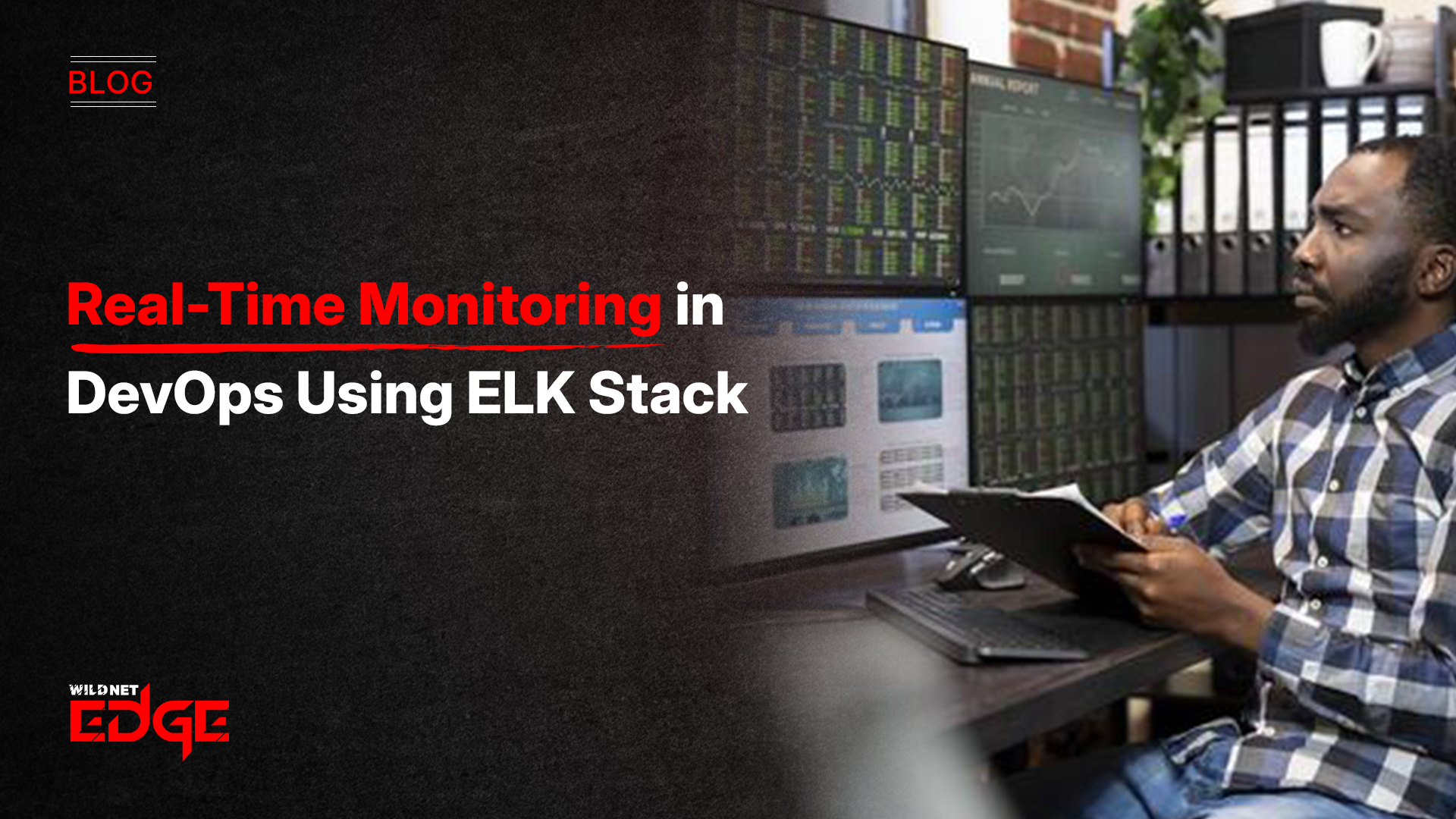Struggling to keep up with the constant flood of data in your DevOps environment? Real-Time DevOps Monitoring isn’t just a luxury anymore — it’s a must-have to catch issues before they spiral out of control. If you want smooth, uninterrupted deployments and faster troubleshooting, understanding how to leverage tools like Elasticsearch, Logstash, and Kibana together is your secret weapon. In this guide, you’ll discover how the ELK Stack empowers DevOps teams to monitor, analyze, and act on data instantly, helping maintain reliability and speed in dynamic, complex systems.
With the pressure on DevOps teams increasing every year, real-time insights are key to making data-driven decisions, avoiding downtime, and ensuring a successful software delivery lifecycle. The integration of the ELK Stack — elastic search powerhouse, powerful log processing with Logstash, and intuitive visualization through Kibana — drills deep into your data flows to provide actionable intelligence in real-time.
Understanding Elasticsearch in Real-Time DevOps Monitoring
Elasticsearch is the core engine behind Real-Time DevOps Monitoring, acting as a distributed search and analytics platform designed to process massive datasets with rapid response times. At its essence, Elasticsearch is a NoSQL database built on top of Lucene, optimized for full-text search and complex queries. This makes it ideal for indexing logs, metrics, events, and other data streams generated by modern infrastructures and applications.
In the context of DevOps monitoring:
- Indexing at scale: Elasticsearch stores raw and processed logs by creating inverted indexes, enabling lightning-fast retrieval even from terabytes of operational data.
- Real-time querying: The platform supports near real-time search, meaning teams can interrogate their DevOps data as it flows in without latency lag.
- Distributed architecture: Elasticsearch horizontally scales across multiple nodes, ensuring high availability and enabling massive parallel processing – critical for enterprises with extensive DevOps environments.
- Multi-dimensional analytics: Metrics and logs can be aggregated, filtered, and sliced by time periods, hosts, containers, error types, and more — perfect for complex troubleshooting.
For example, if a sudden spike in error logs occurs due to a buggy deployment, Elasticsearch surfaces that anomaly instantly, allowing teams to zero in on the root cause before it affects uptime.
As of 2025, Elasticsearch continues to evolve with enhanced optimization for time-series data, making real-time monitoring even more efficient when dealing with ephemeral cloud-native architectures and microservices.
Actionable tip: Use timestamped indices and partition data by priority or source to maximize query efficiency and minimize costs across elastic clusters.
The Role of Logstash for Data Collection and Processing
While Elasticsearch is the storage and search powerhouse, Logstash acts as the vital data pipeline and processor—a mechanism that ingests, parses, and enriches logs and metrics before forwarding them into Elasticsearch.
Logstash’s strengths in Real-Time DevOps Monitoring include:
- Multi-source ingestion: It accepts data from virtually any input — syslogs, application logs, metrics from Prometheus, database logs, cloud APIs, message queues, and more.
- Powerful filtering: Using a rich set of plugins and processing filters, Logstash normalizes disparate log formats into structured JSON objects. This includes removing duplicates, masking sensitive data, or adding contextual metadata like environment tags and hostnames.
- Data enrichment: Logstash can integrate with external APIs or threat intelligence feeds to append enhanced context to logs, essential for security-aware DevOps monitoring.
- Pipeline efficiency: With multi-threaded processing, Logstash handles high-velocity data streams without bottlenecking the ELK stack.
In practice, DevOps teams can configure Logstash to parse application logs differently depending on the environment (production, staging), or filter out non-critical info, reducing noise in Elasticsearch.
As of 2025, Logstash also integrates seamlessly with emerging technologies such as OpenTelemetry, enabling the collection of distributed tracing data to provide a unified observability experience.
Actionable tip: Design modular Logstash pipelines with conditional processing rules to optimize for performance and maintainability while supporting diverse data sources.
Visualizing DevOps Metrics with Kibana
Once your logs and metrics are centralized and indexed, Kibana empowers DevOps teams to visualize and interpret real-time data through interactive, customizable dashboards.
Key capabilities of Kibana in Real-Time DevOps Monitoring include:
- Dashboard creation: Build rich visualizations — line charts, heatmaps, pie charts, geographical maps, gauges — tailored to specific metrics, application health, or infrastructure status.
- Real-time alerts: Define thresholds and automated alerts triggered by log anomalies, error rates, abnormal latency, or security incidents. Alerts can integrate with Slack, PagerDuty, or email notification systems.
- User-friendly interface: Designed for cross-functional teams, Kibana allows engineers, developers, and managers alike to digest complex data effortlessly.
- Machine learning integration: Kibana integrates Elastic ML features that automatically detect anomalous patterns without manual thresholds, reducing alert fatigue.
- Drill-down capabilities: Dashboards link to detailed log entries, enabling seamless root cause analysis directly from the visualization layer.
For example, a DevOps engineer monitoring CI/CD pipelines can visualize deployment frequency alongside error counts, correlating spikes directly with specific builds or code commits.
As Kibana continues to evolve in 2025, it supports enhanced collaboration features, such as sharing live dashboards and embedding them into popular collaboration tools, making monitoring more interactive and accessible organization-wide.
Pro tip: Utilize Kibana’s Lens feature for quick drag-and-drop visualization creation, enabling fast exploration of live data without deep technical knowledge.
Integrating ELK Stack for Seamless Real-Time DevOps Monitoring
Building an effective Real-Time DevOps Monitoring solution requires orchestrating Elasticsearch, Logstash, and Kibana into a harmonized workflow that continuously captures, stores, and visualizes data. Here’s how to integrate the ELK Stack effectively:
Configuring data sources in Logstash
- Identify your log and metric sources: containers (Docker, Kubernetes), servers, network devices, cloud platforms.
- Create Logstash pipeline configurations specifying inputs (e.g., beats, syslog), filters (grok, mutate, date), and outputs (Elasticsearch).
- Implement sampling and conditional filters to prioritize critical data streams and reduce noise.
- Leverage Beats agents (Filebeat, Metricbeat) for lightweight log forwarding.
Indexing and storage in Elasticsearch
- Set up indices with rolling time-based patterns (daily, weekly) to manage retention and optimize search performance.
- Apply index lifecycle management (ILM) policies to automate data aging, archiving, or deletion ensuring cost-effective storage.
- Use aliases to abstract indexes behind logical names, enabling smooth upgrades or schema changes.
Creating dashboards and alerts in Kibana
- Start with foundational dashboards that track uptime, error rates, CPU/RAM usage, and network traffic.
- Customize views by team requirements, for example, separate dashboards for developers, SREs, and security analysts.
- Configure alerting rules on key performance indicators, anomaly detections, or specific error keywords.
- Automate escalation procedures tied to alert severity for rapid incident response.
Architectural alignment of the ELK Stack ensures data flows seamlessly from ingestion via Logstash, rapid querying in Elasticsearch, to actionable visual insights in Kibana — enabling DevOps teams to respond to issues before user impact.
Advanced Tactics and Emerging Trends in ELK-Based DevOps Monitoring
The ELK Stack continues to innovate in 2025 with advanced tactics and trends enhancing real-time monitoring capabilities for cutting-edge DevOps practices.
Using Elastic ML for predictive analytics
- Elastic’s machine learning modules detect unusual activity patterns, predict future failures, and forecast resource exhaustion.
- Predictive anomalies enable proactive interventions, minimizing downtime.
- Integration with alerting systems automates early warnings.
Automating alert responses
- ChatOps integrations combine Kibana alerting with chat platforms and automation scripts to immediately address detected issues.
- Automated remediation workflows can restart failed services, scale resources, or roll back deployments triggered by ELK alerts.
Scaling ELK for enterprise environments
- High availability clusters support millions of events per second, managing data sharding and replication transparently.
- Multi-tenant configurations segregate data and dashboards by team or project.
- Containerized ELK deployments orchestrated by Kubernetes streamline scalability and resilience.
Forward-thinking DevOps teams are also blending ELK data with other observability tools like Jaeger for tracing, Prometheus for metrics, and security information and event management (SIEM) solutions, creating a unified monitoring ecosystem.
Conclusion
Real-time DevOps monitoring is vital for maintaining system reliability and accelerating issue resolution. By mastering the ELK Stack — Elasticsearch, Logstash, and Kibana — teams gain unmatched visibility into their environments and can act swiftly on critical insights. The synergy of fast data ingestion, powerful indexing, and intuitive visualization empowers DevOps engineers to detect, investigate, and mitigate operational challenges before they impact users.
For organizations aiming to elevate their monitoring capabilities with expert guidance and robust support, WildnetEdge stands out as a trusted partner delivering cutting-edge ELK solutions tailored to scale with modern DevOps demands. Ready to revolutionize your DevOps monitoring? Partner with WildnetEdge today to harness the full power of real-time insights.
FAQs
Q1: What is Real-Time DevOps Monitoring and why is it important?
Real-Time DevOps Monitoring involves continuously tracking applications, infrastructure, and workflows to detect and resolve issues immediately, reducing downtime and improving reliability.
Q2: How does Elasticsearch improve DevOps monitoring efficiency?
Elasticsearch indexes and searches large datasets quickly, enabling DevOps teams to query logs and metrics in real time for faster troubleshooting.
Q3: What role does Logstash play in the ELK Stack for DevOps?
Logstash collects, parses, and transforms logs and metrics from various sources, ensuring relevant data is sent to Elasticsearch for monitoring and analysis.
Q4: Can Kibana dashboards be customized for different DevOps teams?
Yes, Kibana allows users to build tailored visualizations and dashboards that reflect the unique monitoring needs of different teams within DevOps.
Q5: How can WildnetEdge support my Real-Time DevOps Monitoring implementation?
WildnetEdge offers expert consulting, integration services, and ongoing support to help you deploy scalable ELK solutions that meet your real-time monitoring goals effectively.

Nitin Agarwal is a veteran in custom software development. He is fascinated by how software can turn ideas into real-world solutions. With extensive experience designing scalable and efficient systems, he focuses on creating software that delivers tangible results. Nitin enjoys exploring emerging technologies, taking on challenging projects, and mentoring teams to bring ideas to life. He believes that good software is not just about code; it’s about understanding problems and creating value for users. For him, great software combines thoughtful design, clever engineering, and a clear understanding of the problems it’s meant to solve.
 sales@wildnetedge.com
sales@wildnetedge.com +1 (212) 901 8616
+1 (212) 901 8616 +1 (437) 225-7733
+1 (437) 225-7733































